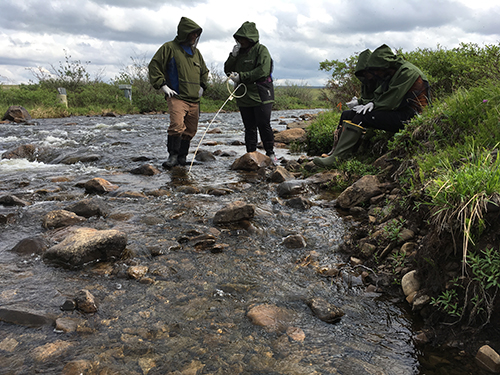
Today we trained on how to execute stream surveys in the field. The Arctic researchers want to see where the aquatic microbe community comes from and where it travels to.
Research Questions!
- What are the sources of bacteria to streams?
- Do these sources vary with the seasons or the amount of rainfall?
- What bacteria are carried by streams to other locations on the landscape?
Dr. Byron Crump, Jason Dobkowski, Johanna Albrigtsen, and Graham Stewart went to Toolik outlet to train on how to do the upcoming stream surveys. Stream surveys consists of installing a hyporheic zipper into the river and collecting hyporheic water, collecting soil water, soil samples, sediment samples, and rock scrubs.
Hyporheic Zone Water SamplingSampling refers to the process of selecting units or portions of a larger group that will be studied in order to answer questions about the larger group. The units can be people, water samples, ice cores, or any other appropriate object. Participants will explore the meaning of sampling and how it impacts experimental design and explore factors that define and limit sampling in the variety of projects visited during the expedition. They will consider how results from the chosen samples are used to describe the bigger target of a project's study.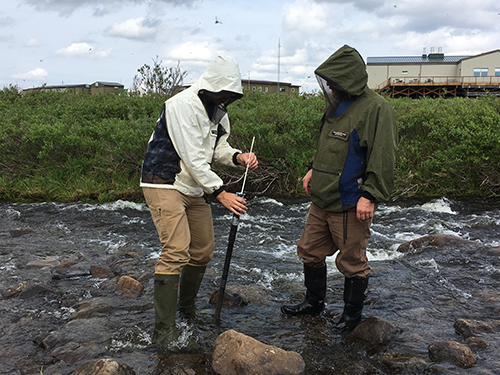
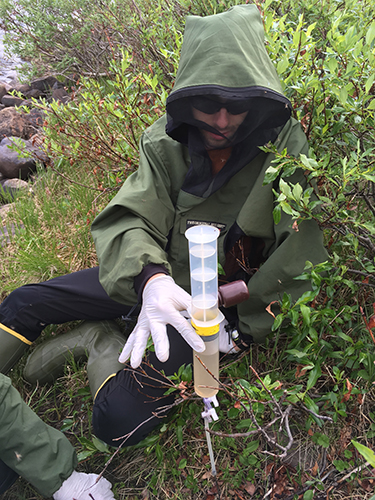
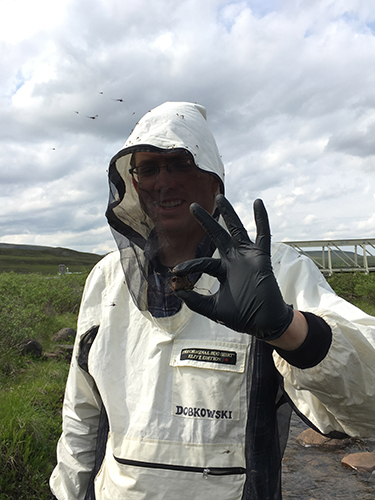
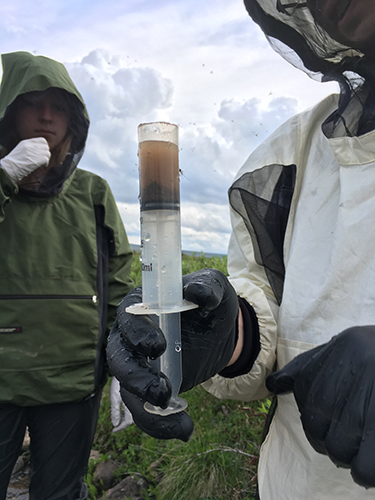
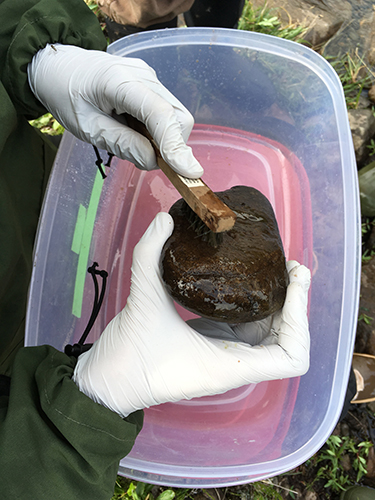
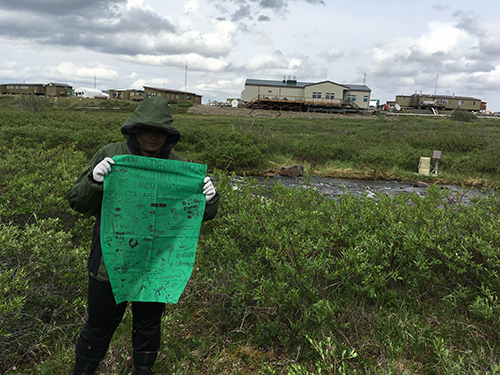


Comments